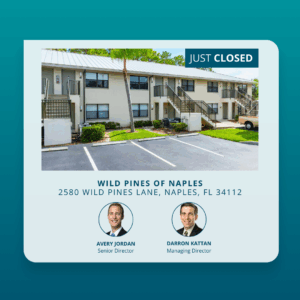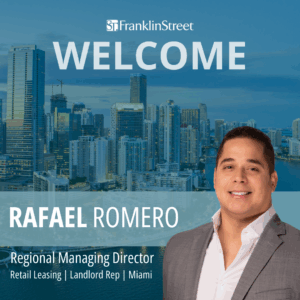Excerpted from May 2018 issue of Southeast Real Estate Business.
Orlando’s economy will continue to revolve around tourism for as long as Disney, Universal and SeaWorld continue to help draw record numbers of visitors to the area – over 68 million visitors came to Central Florida in 2016, according to Visit Orlando Research. But you should realize that there is much more activity happening in the area’s evolving retail scene than just the theme parks. A strong mix of commercial development, population growth and job creation is spurring an unprecedented level of real estate expansion across the region.
Building Boom
New construction is a huge economic driver for Orange, Seminole, Osceola and Lake counties. Commercial builders pulled permits totaling $151.3 million in February 2018, according to a recent report from Dodge Data & Analytics. Homebuilders added another $580.5 million in residential permits that same month. Those projects will help generate more jobs and bring new homes into the market to support the region’s growing population.
Residents, tourists and businesses will all be positively affected by the multi-billion dollar I-4 Ultimate Improvement Project, an overhaul of a 21-mile stretch of Interstate 4 in Orange and Seminole counties. Orlando’s submarkets are being transformed due to several other major infrastructure projects that would complete the Orlando beltway and link Wekiva Parkway (State Road 429) and State Road 417. The new connection will pave the way for a long-awaited retail development in Northwest Orange County.
SunRail, Central Florida’s commuter rail, is preparing to open its new $186.9 million southern expansion that will include residential, commercial and retail opportunities adjacent to the planned stations. Orlando’s airport is also undergoing a $3.5 billion expansion that should boost the area’s $60 billion tourism industry.
Population Growth
The Florida Retail Federation says consumer spending accounts for $155 billion each year. Population growth is a large reason for retail’s economic impact on the state. Florida was the nation’s fifth-fastest growing state last year, and Orlando ranked as the fastest growing large metropolitan area (MSA) in the country, according to the Florida Department of Economic Opportunity. In 2017, the metro area’s population rose past 2.5 million for the first time, making it the sixth-largest MSA in the Southern United States, and the third-largest MSA in Florida. In terms of new residents gained, metro Orlando ranked No. 8 in the nation, the same as the prior year.
Orlando’s employment growth also outpaced every other large MSA in America for the third year in a row. The hospitality industry is still our largest employer, but Orlando’s fastest growing industries over the last year have been manufacturing, construction and financial services as the local economy continues to diversify.
The Orlando MSA features one of the highest millennial growth rates in the country — 12.7 percent according to the U.S. Census Bureau — which is a big plus for employers and retailers. The area also has a deep labor pool thanks to a thriving academic community led by one of the largest U.S. colleges, the University of Central Florida, with has an enrollment of more than 66,000 students.
Concepts, Opportunities
Outside of the impact e-commerce has made on retail, the shopping experience has changed, and shoppers are feeding their habits by frequenting larger town center concepts rather than the traditional enclosed malls and big boxes. However, the problem for retailers is landing in attractive retail projects in order to capture this demand.
Retailers are struggling to find quality locations that effectively capture the market they are trying to reach. On top of this, redevelopment in core markets has become so expensive few retailers can afford the rents. Regional centers, such as The Loop, Fowler Groves, Waterford Lakes Town Center, Winter Park Village and Seminole Town Center, have already reached full occupancy leaving few opportunities for newcomers. These large town centers have been at or near 0 percent vacancy with tenant wait lists on some properties, while B and C class suburban retail centers still averaged about 9 percent vacancy.
To offset the lack of quality locations in regional town centers, retailers are turning to existing urban projects. Shoppers, especially millennials, are enjoying the revitalization of older downtown village centers like Baldwin Park, College Park, Downtown Winter Garden and Thornton Park, as they move closer to urban centers and patron more local concepts over the large retail chains.
These markets are quickly being absorbed, so developers are targeting additional infill redevelopments such as the Colonial Mall and Colonial Landing to attract shoppers. The recently announced development plans for the Packing District on the west side of College Park resonates this need as well.
About the Authors:
Terrence Hart serves as Senior Director for Franklin Street, specializing in retail tenant representation, landlord leasing, disposition, and development throughout Central Florida. Mr. Hart focuses on business development initiatives for the Orlando office as well as new client relationship opportunities. He can be reached at [email protected] or at 407.458.5400 Ext. 606.
As an Associate at Franklin Street, Tim Rogers specializes in retail landlord representation throughout the Orlando and Central Florida market. In this role, he focuses on leasing services, including transaction management and execution, as well as market analysis and business development on behalf of clients. He can be reached at [email protected] or at 407.458.5400 Ext. 615.



